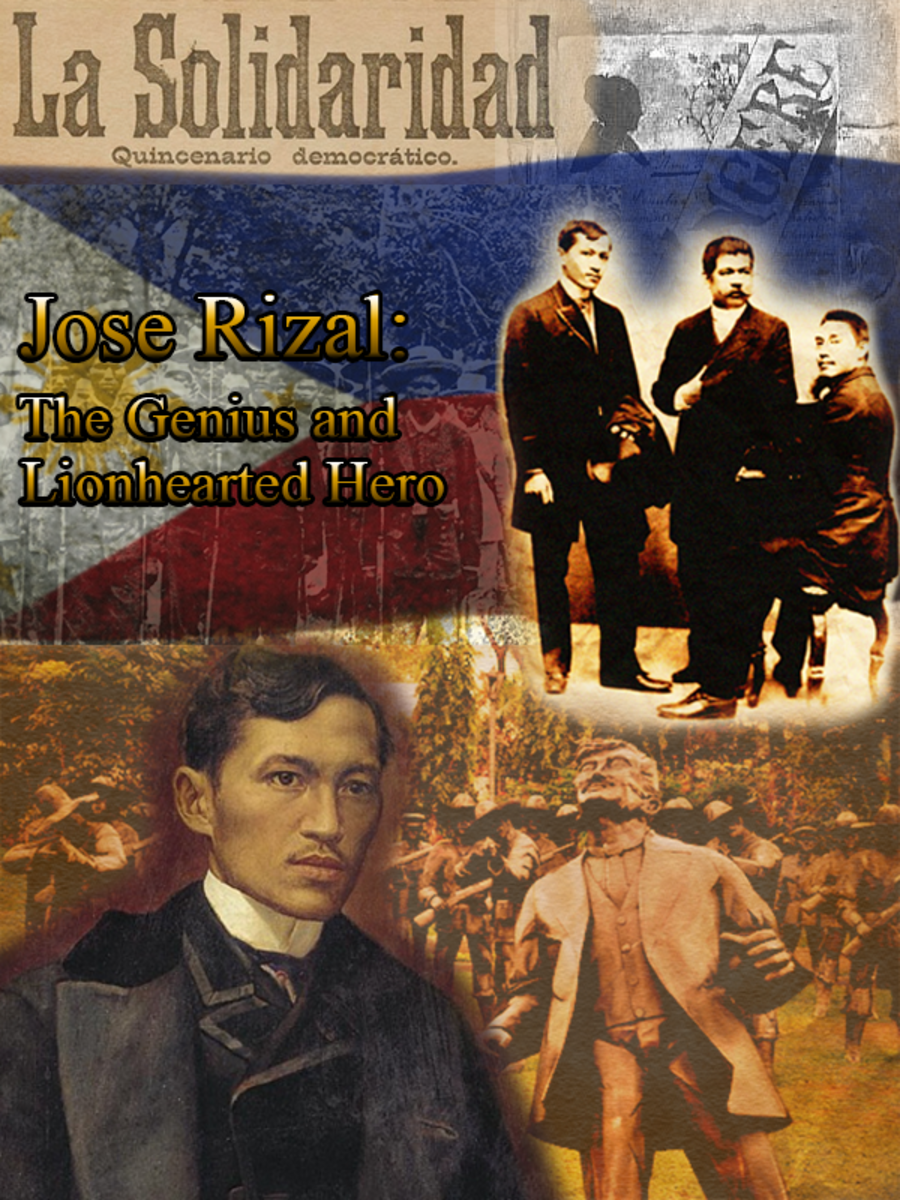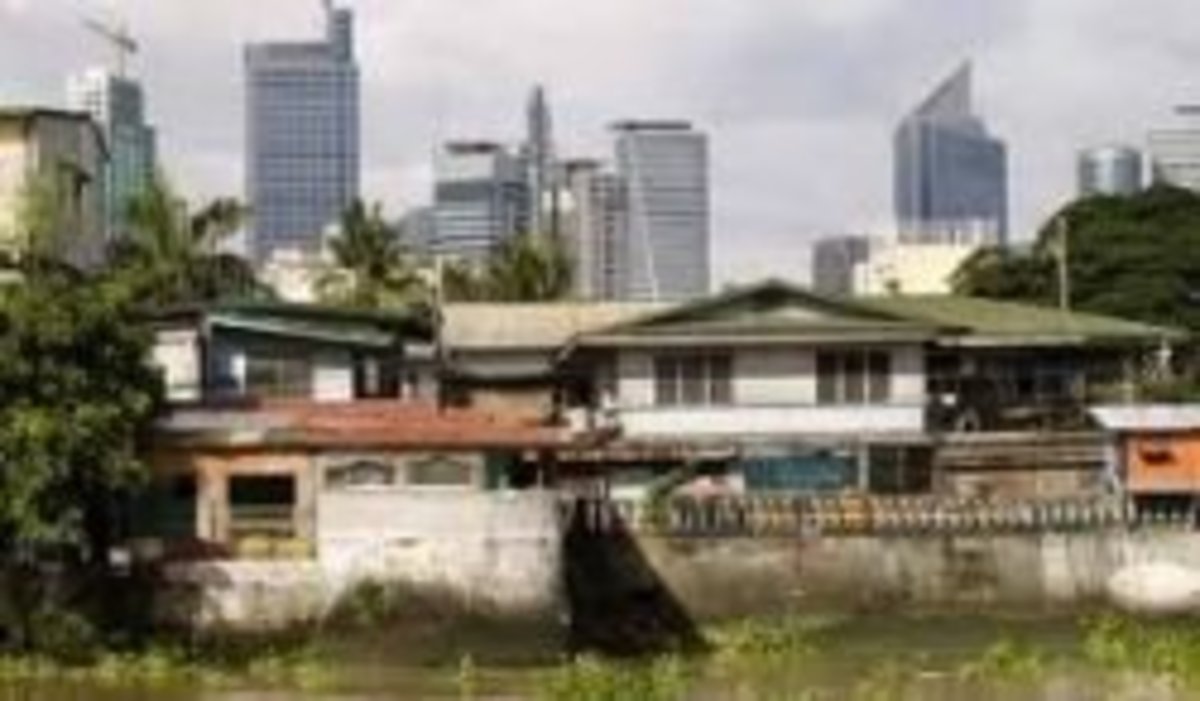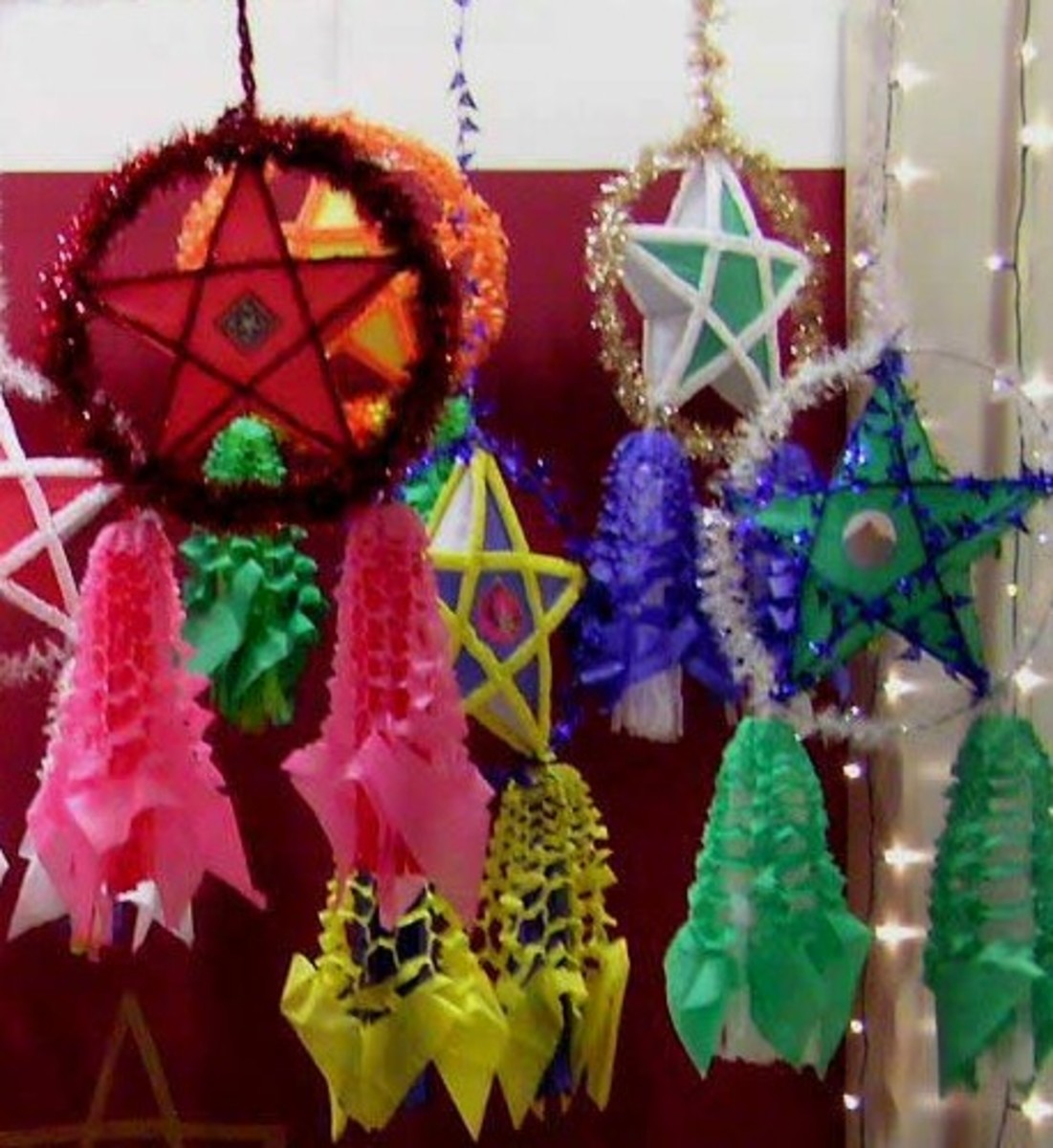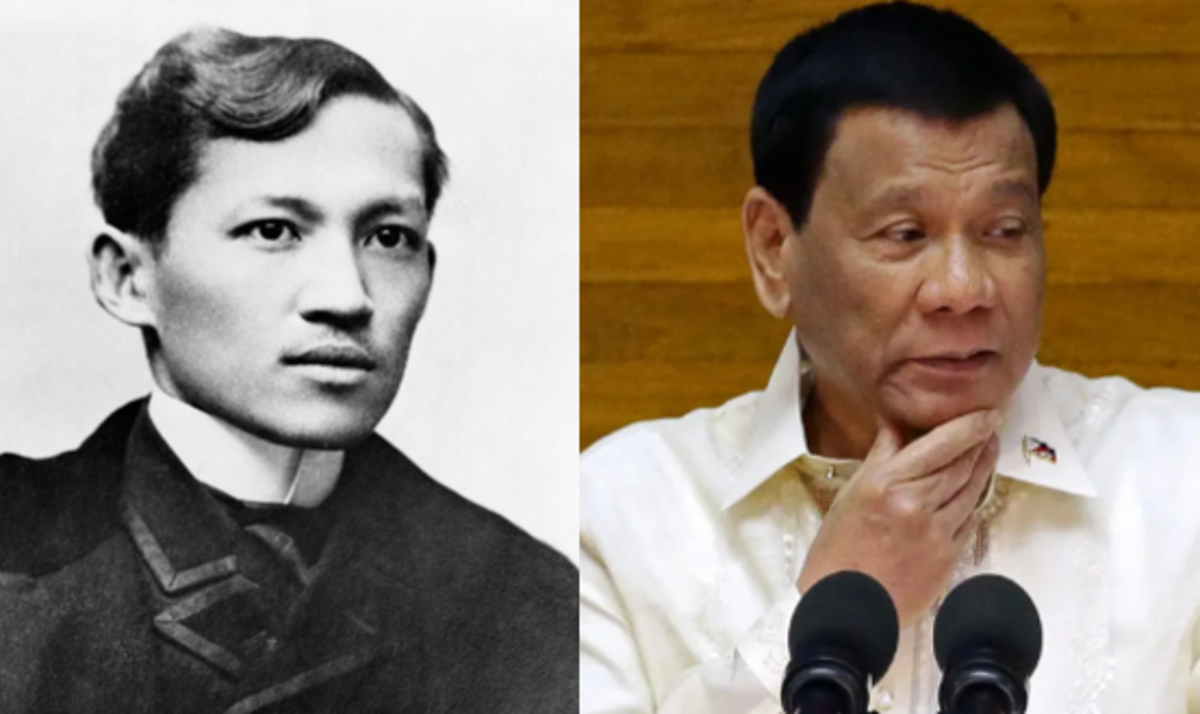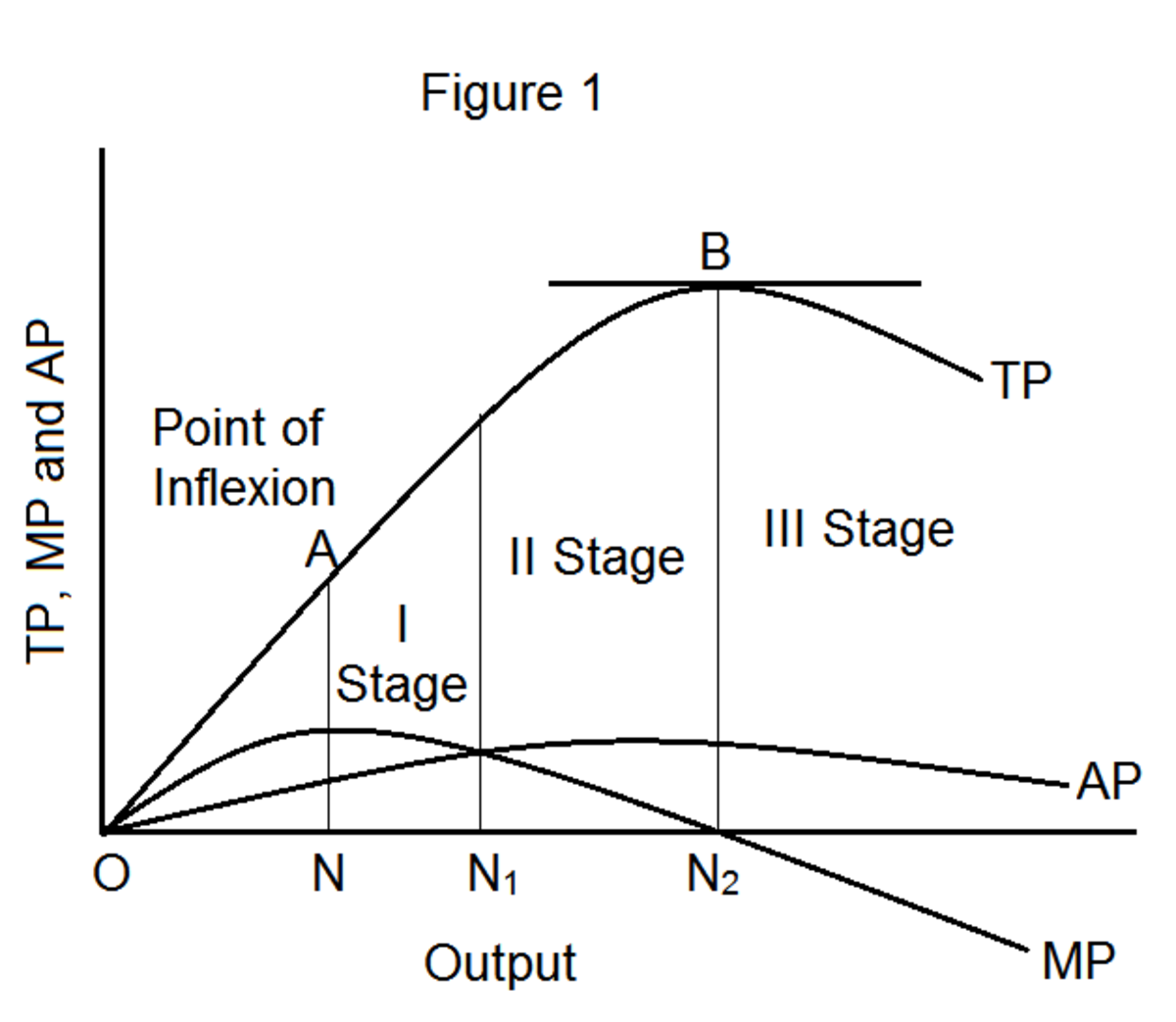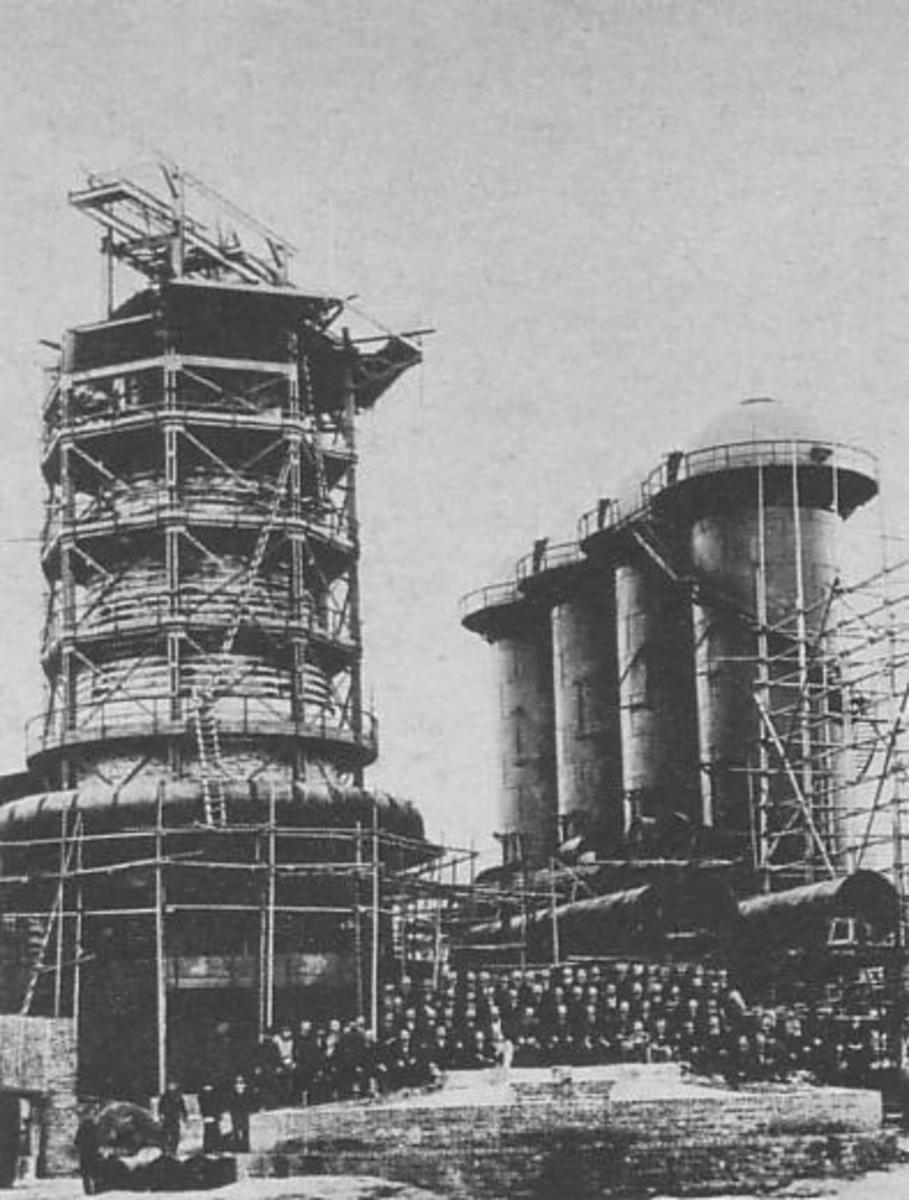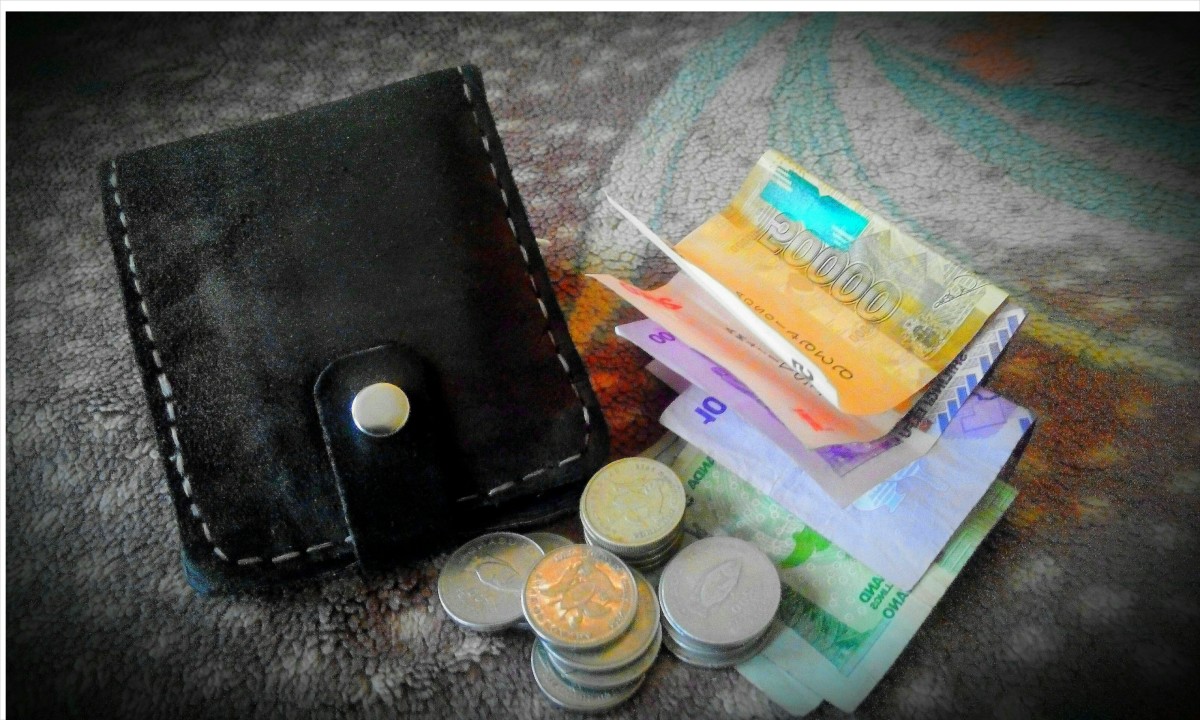Filipinos Must Save Themselves from Poverty
Structure of Filipino society when it will have been restructured.
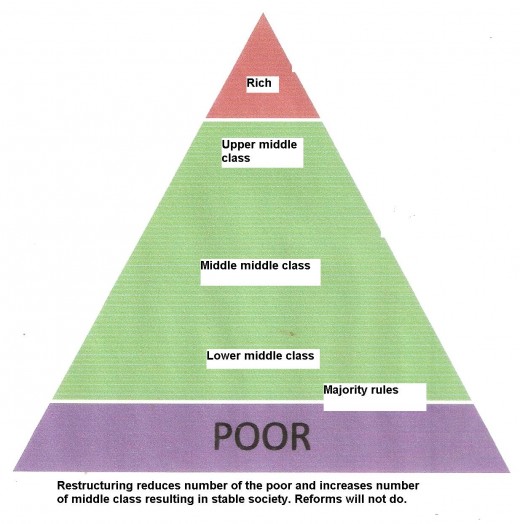
Who is the Messiah who will save the Filipinos from poverty?
Filipinos are in search for a quick salvation from poverty
About 80% of Filipinos are poor, 10% are in the middle class, and 10 % are in the ruling class. The Filipino society is an inverted pyramid resting on the fulcrum that is the ruling class. That means that this society is in the verge of collapse.
(I have a Hub “National hazards done by the Ruling Class in the Philippines”).
What brings about this culture of salvation?
Christianity brings about this belief in salvation to be done by a Messiah. In Christianity. Jesus Christ saved humanity from sin. (Whoever created sin, or why did god permit sin is not well explained.) Filipinos are 80 to 85% Catholic.
This belief in salvation has fostered patience with sufferance. It has fostered patience for the coming of a savior. It is not clear if Jesus would be the savior in this earth. It seems certain that he will be the savior after death. But Filipinos want salvation now that they are still alive so that they can enjoy life.
History of the Philippines is replete with small saviors. One of them is Hemano Pule of Pangasinan. He lead a small religious revolt to no avail. He was smothered by the Catholic church.
Dr. Jose Rizal as savior
Another act of salvation was witnessed in Dr. Jose Rizal, the first to be considered as the top national hero. (Andres Bonifacio is now recognized as the top and Rizal, the next). Rizal belonged in the landed class during the Spanish regime. He was schooled in Calamba, his hometown, then in Biñan, Laguna. He went to college in Ateneo de Manila then University of Sto. Tomas. Determined to give back the light to the eyes of his mother who was earlier blinded, he went to study ophthalmology in Europe, He toured France, England and had an apprenticeship in Germany.
While in Europe he wrote his first novel, "Noli Me Tangere," that translates into “Touch Me Not.” The reason is that the book is opening the cancerous Filipino society for the Filipinos and Spaniards to see. It is a historical novel that depicts the cruelty of Spaniards in the Philippines and the double standards of the priests. In his novel one character was a priest who fathered a daughter by the wife of a barangay leader, named Capitan Tiago. (Barangay is the smallest political unit in the Philippines).
Noli was written in Spanish and only one thousand copies were printed in Europe. Copies were smuggled into the Philippines. Spaniards were furious when they discovered it. Rizal said everything he wrote in his novel was true, he can prove it.
Then Rizal wrote another novel, “El Filibusterismo,” that translates into “The Filibuster,” Two of his characters debated whether an armed revolution or reforms would save the Philippines. Rizal did not resolve that question in the novel. Again copies were printed abroad and some were smuggled into the Philippines. The Spaniards were all the more furious at Rizal.
The Spaniards captured Rizal and exiled him in Dapitan, an island in Mindanaw.
The Spanish-American war broke out in Cuba in the 1890s. Rizal applied as a doctor on the side of Spain, to save lives of Spanish soldiers and to show that he was not against Spain. Rizal was a reformist who wanted representation of Filipinos in the Spanish Cortes, or Congress. On his way to Cuba while on the ship, Rizal was captured, brought back to the Philippines and jailed. He was accused of being a leader in hatching an armed revolution in the Philippines against Spain. Rizal denied it and to show his innocence he did not try to escape. He offered a weak defense when tried in Spanish court. He did not stand a chance of getting acquitted, anyway. He was sentenced to die by musketry in a public place, now called Luneta where his monument stands.
The Spaniards believed that by killing Rizal they had killed the imminent armed revolution. They were wrong. They were stupid, according to Teodoro A. Agoncillo, author of "A History of the Filipino People," and national scientist in history.
Rizal is considered as an inspiration of Filipino revolutionaries. However, it was Andres Bonifacio who organized the armed revolution. Rizal was consulted about the imminent uprising but he advised caution as Filipinos did not have enough arms. The revolution started in 1896 and ended in 1898 when the Spanish officialdom in Manila were virtually captured. Then USA intervened and annexed the Philippines in its empire in the far east.
Rizal was a symbol of salvation from the hands of those who considered themselves the vicars of Christ.
Bonifacio was a savior who relied on the people committing to arms. He did not fancy himself as the lone savior, as some thought Rizal would have been. There is some semblance of Rizal with Jesus Christ who died on the cross to save humanity, as Christianity claims it to be. Rizal died loving his country. He had his role. Unfortunately, Bonifacio or Rizal, did not live to see the emergence of Philippines from poverty. America came in to play the spoiler.
Douglas MacArthur as savior?
It might be far fetched but there is lingering if tacit belief that Gen. Douglas MacArthur was a savior of the Philippines. He was commissioned by Pres. Manuel L. Quezon to organize the United States Armed Forces in the Far East (USAFFE) in the 1930s. The Philippines was still a commonwealth under USA in preparation for its grant of independence in July 4,1945 which was postponed due to the Japanese occupation in WWII.
When the invading Japanese imperial army was about to occupy the Philippines in 1942. MacArthur was called back by the USA, recommissioned to the USA army and made commanded on the Southwest Pacific theater ground forces. (Admiral Chester Nimitz was the commander of the Navy.) From the shelters of Corregidor Island at the mouth of Manila Bay, MacArthur embarked on his trip to Australia where he would assemble the forces to defeat Japan. Before his trip he gave the command of USAFFE to Gen. Jonathan Wainright and promised “I shall return.”
“ I shall returned” served as the battle cry of Filipinos and Americans who were either jailed as prisoners of war or as guerrillas in the countrysides waiting for MacArthur. The general came back with the liberating forces of the Allies, Americans, Australians, Canadians, and Filipinos in 1945.
However, MacArthur was an implementor of American policies. He dismantled feudalism in Japan but helped perpetuate feudalism in the Philippines.
Ramon Magsaysay, a promise aborted
Ramon Magsaysay was a guerrilla leader against the Japanese in Zambales province. He was a mechanic. He had rapport with the masses.
After WWII, and upon gaining independence from USA in 1946, the Philippines saw Manuel Roxas as first president. He implemented the policies of USA. Parts of those policies were: do not allow any Communist Party, do not allow any land reform, allow the USA to have military bases in the Philippines. During the Japanese occupation some Filipino guerrillas organized the Hukbo ng Bayan Laban sa Hapon or HUKBALAHAP in short. It protected the populace from the Japanese menace. It had a Russian-leaning ideology. At the first national election after independence some HUKBALAHAP leaders ran for seats in Congress and won. Prominent leaders were Luis Taruc, Jesus Lava, and Jose Lava. Along with the policy of USA they were charged with collaboration with the Japanese and electoral fraud, among others. They were convicted and their arrest was ordered.
Roxas died of heart attack while delivering a speech at Clark Airbase of the Americans in Pampanga province. Elpidio Quirino who was vice president took over.
For his guerrilla experience and connections, Ramon Magsaysay was appointed secretary of National Defense. It was his direct responsibility to arrest the convicted HUKBALAHAP leaders. Some of them had been going around Manila. One night the house of historian Agoncillo was raided on tips that they were hiding there, Agoncillo having been a close acquaintance. The raiding team found no quarry because they were in the neighboring house. (This I was told by Dr. Agoncillo, the historian's wife when I interviewed her in writing a biography of Teodoro A. Agoncillo).
Eventually, Magsaysay succeeded in having the HUKBALAHAP leaders surrender to him This feat made him popular. In the next presidential election the Central Intelligence Agency (CIA) of USA took the responsibility to have Magsaysay elected as president versus Quirino and other candidates like Claro M. Recto and Gen. Carlos P Romulo. Romulo withdrew his candidacy when he learned that the CIA was supporting Magsaysay who won. As president he opened the doors of Malacañang to the poor; a lot of the poor flocked to the palace.
[Recto was the president of the constitutional convention that drafted the 1935 constitution of the Philippines. Romulo was the first American or Filipino-American who had a doctorate degree on American literature. He was aide de camp of Gen. Douglas MacArthur. Taruc was jailed in Muntinlupa state prison up until the dictatorship of Marcos. Marcos released Taruc who went on to lecture on land reform, saying in effect: "according to the land reform of Marcos...."]
Magsaysay delivered a speech in the Visayas, Cebu, if my memory serves me right. (I was still in grade 4). He was accompanied by one reporter. On his way back to Manila, his presidential plane exploded. His wrist watch withstood the burning. The reporter survived. Magsaysay was killed and so were the hopes of a lot of the poor.
Marcos as savior?
Ferdinand Marcos started out with a promising political career saying that if elected in the house of representatives then to the Philippine senate he would become president. He was a brilliant lawyer, having topped the bar examinations, a respected barrister and a convincing politician. Filipinos looked up to him as a coming savior. A lot of the members of the landed class glued with Marcos, who did not belong in the landed class. Marcos mastered the dynamics of a homogenous ruling class and exploited them to his advantage consolidating power into his hands. In 1972 he declared martial law in the Philippines “to save the republic and reform society.” Several Filipinos believed in him. Dictatorship is a little inconvenience compared with the prospect of salvation from poverty.
Marcos turned out to be a plunderer who stole from the coffers of the government, and nurtured cronies who used the capital of Philippine banking institutions without collateral. The Philippine economy was in downward slide propped up by foreign loans. Several Filipinos now felt the pain from limited liberties. Of course, thousands were jailed and murdered to preserve the dictatorship.
Marcos was not the savior that Filipinos were looking for. He was ousted by People Power at EDSA I.
Benigno Aquino, Jr.
The former senator was made to play a role of aborted savior by the Marcos dictatorship. He was the chief rival of Marcos in the upcoming presidential election. Upon declaration of martial law he was captured and jailed along with other oppositionists. He contracted heart disease and was confined in the Philippine Heart Center for Asia. He was allowed to go to USA for heart surgery. Marcos would not allow him to die in the Philippines because they happened to belong in one fraternity, Upsilon. A lot of Upsilonians manning the Marcos dictatorship would not approve of Marcos having a direct hand in the death of Aquino, Jr. So the game was to be played with Aquino, Jr alive but inutil, or a toy to play around with.
When well enough, Aquino, Jr. said he was coming back to the country to help in remedying economic malaise. When he landed in the airport, he was assassinated by a squad of soldiers.
( I have an account of this assassination in my Hub “Preludes to the Marcos dictatorship”).
Millions of Filipinos participated in the funeral cortege of Aquino, Jr. in the streets of Metro Manila. The airport where he was assassinated was renamed Ninoy Aquino International Airport after him. His monument was erected in Makati City. One major parks and wildlife office and compound in Quezon City is named after him.
Pres. Corazon C. Aquino
Widow of Benigno Aquino, Jr. no other president is as prayerful as Pres. Cory. She graduated in a Carmelite school in USA. When trouble confronted her during her incumbency as president she turned to prayer. Of course, prayer was not enough to counter the seven coup d’état attempted by Gregorio Hosasan to drive her out of Malacañang, the office and residence of the president. The military savvy of Gen. Fidel V. Ramos saved her presidency.
Pres. Cory came up with a new constitution that replaced the Marcos constitution of 1973. She is credited of restoring democracy in the Philippines. However, she failed to restructure the Filipino society to bring about the expected salvation from poverty. She did not add to the coverage of land reform by including sugar lands and coconut lands.
Benigno Teodoro, who was appointed secretary of the Press by Pres. Cory thought that she could have enlarged in the coverage of land reform with just one signature when she was still virtual dictator during the transition from the EDSA I revolution up until the ratification of the 1987 constitution. Over this issue, Teodoro said he resigned his cabinet position. The new constitution provides for local and national elections for elective positions. It allows the Congress to operate. Pres. Cory waited for Congress to enlarge the coverage of land reform that has never come. Those who come to occupy seats in Congress are members of the ruling class. In effect EDSA I served only to drive out Marcos and restore the traditional ruling class.
Pres. Fidel V. Ramos
He is the only Protestant the Filipinos ever had as president. Gen. Ramos was endorsed by Pres. Cory when he ran for the Presidency and won. He does not belong in the landed class. He is a son of a former secretary of the Department of Education and former ambassador of the Philippines to the USA. He graduated in West Point, the US military academy, majoring in engineering. He was catapulted into popularity by Marcos in the attempt to arrest him on charges of mutiny against Marcos. Ramos was then deputy chief of staff of the Philippine armed forces. In 1985, there was a power play to succeed Marcos in the dictatorship because Marcos was sick and in the verge of death. So it was believed, from kidney trouble. Earlier Marcos had a transplant on both kidneys. Ramos, Juan Ponce Enrile and Honasan played lead roles in the EDSA 1 People Power. The leadership was passed on to Cory Aquino who had a claim of having been cheated in the past presidential election in 1985 opposite Marcos. Besides it was doubtful if the Filipinos would rally behind the leadership of Ramos or Enrile or Honasan as they would behind Cory Aquino. The foreign lenders were looking for a leader who could restore order and ensure smooth payments of loans and interests. They supported Cory.
Pres. Ramos solved the chronic brownouts throughout the country by restoring integrity and management strengthening of the National Power Corporation. He dismantled the monopoly on telecommunications by a company partly owned by the Cojuangco family. He spurred large construction of infrastuctures by means of the build-operate-transfer that got the participation of the private sector. Pres. Ramos was in the verge of coming up with a motor engine factory with a partnership with Proton of Malaysia when his term as president came to an end. Ramos made the Philippines into a Tiger Economy. The constitution provides for one term of a president only. So Filipinos lost the leadership of Pres. Ramos who has shown he could still come up with moves to alleviate the poverty of Filipinos. All because of the over reaction to the dictatorship of Marcos: a bad president is never to be given an opportunity to commit the same acts. However, a good president is precluded to do the same good acts as well. He said land reform was the cornerstone of his administration; however, he did not initiate for new laws on land reform to include coconut lands and sugar lands. He was a reformist.
Joseph Estrada as champion?
Joseph Ejercito adopted the name he used in the movies, Joseph Estrada, as his name when he ran for senator in the Philippines, again when he ran for the vice-presidency and again when he ran for the Presidency. The main reason is that he is more known by the voters as Joseph Estrada than as Joseph Ejercito. He won as mayor of San Juan City, as senator, as vice president, then as president.
In the movies he played roles as champion of the downtrodden, or a person who rose from rags to riches. Never mind that he has a legitimate wife and two other common-law wives with whom he has children. He was a college drop out. He said he did not have to be an expert in anything as president because there are a lot of bright Filipinos who could serve as his consultants.
A vote for Estrada can be seen as a desperation for salvation. People wanted someone who could fix problems and deliver them from poverty. Unfortunately, problems are so enormous or so complicated that could not be solved in a short time like two hours in a movie house watching movies of Estrada.
Estrada proved to be a big disappointment. Three years into his incumbency as president, the economy was sliding down due to mismanagement directly attributed to Estrada. He was an errand boy of his political patrons. He himself engaged in the illegal numbers game called “hweteng.” There are good consultants alright but it takes brains on the part of the president to adopt the best counsel. Usually he adopted the wrong counsel. He was impeached, his impeachment trial was aborted. He was ousted from the presidency by a coup. He was accused of plunder, tried and convicted. He was pardoned by Pres. Gloria on spurious political strategy. He was maneuvered to run again for the presidency and split the opposition vote so that the candidate of Gloria would win. He landed next to Pres. Aquino III; Gloria's candidate landed fourth in the presidential race.
Pres. Gloria Macapagal-Arroyo, another disappointment
Her popularity stems from her father, former president Diosdado Macapagal. Pres. Macapagal stirred the first land reform code of the Philippines that includes rice lands only. It failed to include sugar lands and coconut lands. That means that the landlords of these vast tracks of land are more powerful than owners of rice lands.
Gloria has a doctorate in economics from the University of the Philippines, the premier public university. However, in the case of Gloria a vast knowledge in theoretical economics is overwhelmed by power economics of the ruling class where she belongs. Gloria's mother was the second wife of Pres. Diosdado; she belonged in the landed class.
Pres. Gloria is a big disappointed, to say the least.
Pres. Benigno Simeon C. Aquino III
He was catapulted into the presidency by his father, former senator Benigno Aquino, Jr. and his mother, Pres. Corazon C. Aquino.
So far, he had spurred the impeachment of the chief justice of the Supreme court, whose appointed was questionable in the first place. He had also triggered moves to impeach the chief justice of the Ombudsman, a special court in charge of cleaning the bureaucracy. She resigned her position before impeachment proceedings could prosper. He instituted zero-based budgeting in government responsible for some big savings on white elephant projects.
Now the biggest act of corruption looks like it has been committed by members of the House of Representatives and some Senators in the release of Priority Development Assistance Fund (PDAF). Some 10 billion pesos have been involved, it is being mentioned. At present Congress is about to abrogate the PDAF.
However, a fight against corruption may prove not enough to alleviate the plight of the Filipinos from poverty. Alleviation calls for restructuring the society not for reforms like fight against corruption. The reason is that corruption is a consequence of the dominance of the ruling class and of neocolonialism.
The masses make revolutions
The late social analyst and author, Renato Constantino, wrote that the masses make revolutions. (But the leaders get mentioned in history books). Filipinos must not look for a Messiah. Only the masses can save themselves from poverty by peaceful means..
The vote is the peaceful means. The vote is the political power of a voter, a Filipino citizen.
Most Filipinos have not been so conscious of their vote, they have used it less guardedly. They have made choices in voting for candidates based on persuasions, fear, endorsements by the Catholic church, money, and false hopes, issued by the ruling class.
The ruling class has repeatedly betrayed the masses. Filipinos should not look for leadership from the ruling class for deliverance from poverty. The ruling class takes care of its interests and uses the masses in attaining its objectives.



